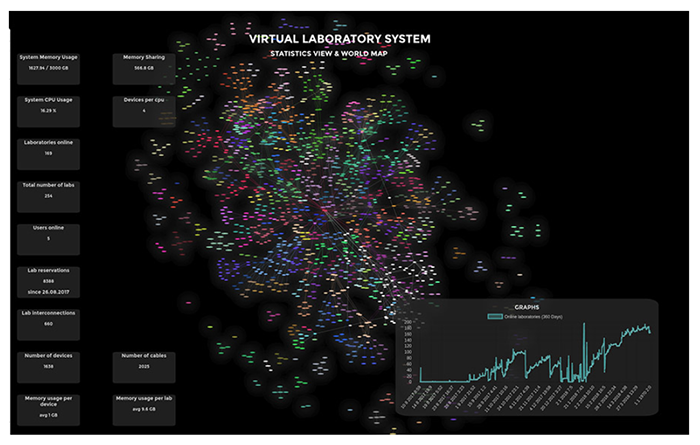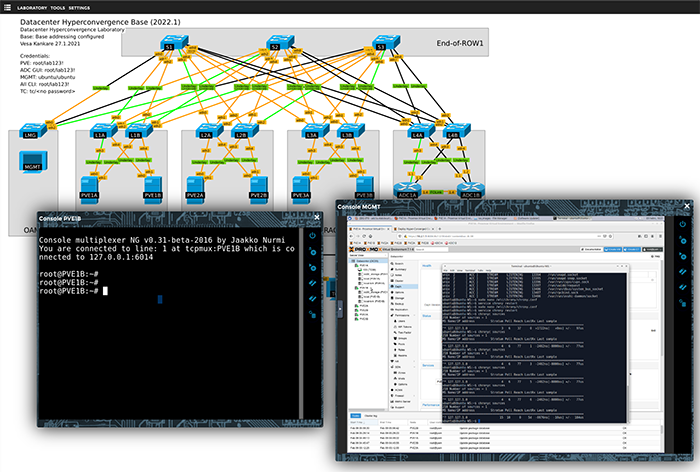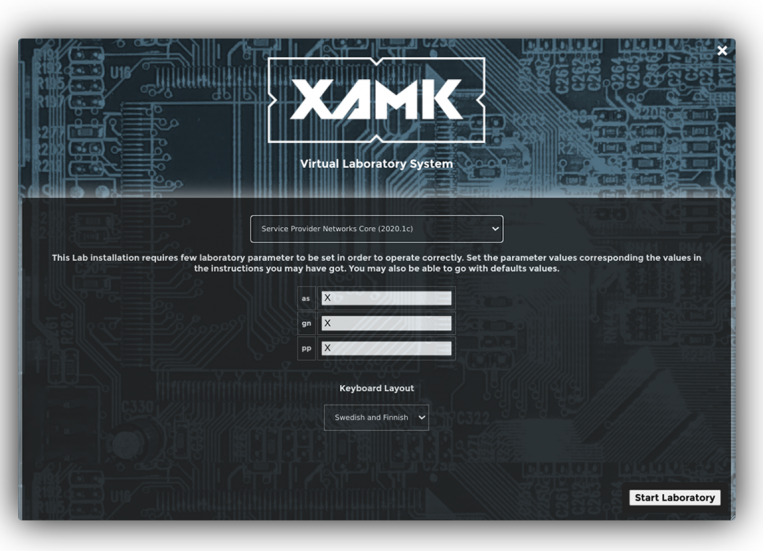VirtualLab – more than a traditional simulator
30.05.2022The VirtualLab environment was primarily designed and developed for educational purposes, but later the demand for utilizing the system for different project and partner requirements have increased.
In recent years, a VirtualLab environment has been developed in the Information Technology Department of South-Eastern Finland University of Applied Sciences. The VirtualLab environment have made laboratory exercises independent of time and place. In a time before the VirtualLab, all laboratory exercises were carried out using a physical network and IT equipment in laboratory classrooms.
The main benefit of being able to do independent hands-on laboratory exercises in the VirtualLab is that students can continue an exercise at home after the lessons or study independently. During the Covid-19 pandemic, the VirtualLab was a savior for cyber security students, who conduct a significant amount of hands-on exercises in laboratory environments.

The VirtualLab allows the creation of extensive, advanced laboratory exercises, from simple home networks to complex data center architectures. It is possible to model the complete IT-system of an enterprise in the environment and perform tests on it. The only restrictions on the environment are those things that cannot be virtualized, for example wireless networks or the physical interfaces of some devices.
The VirtualLab environment serves as a restricted virtualized operational environment. Due to the restriction, the VirtualLab is a safe environment for offensive cybersecurity training and also a safe environment to test technical defensive cybersecurity technologies in practice or to test how malware acts in networks.
VirtualLab is more than a traditional simulator, because all the virtualized devices and IT-systems are virtualized versions of real world devices. As these virtualized devices are having the same effect as physical ones, it is technically possible to connect multiple laboratory environments together, into a real world network that allows both testing and research of very wide systems.

The development process of VirtualLab started in November 2015 for the requirements of a cybersecurity game project. After a few months of development the VirtualLab moved into its own development branch. During the initial development, VirtualLAb was quickly adopted for use in different kinds of exercises and educational purposes.
In 2017, most of the laboratory exercises in Xamk Information Technology Department were performed in the VirtualLab environment. The VirtualLab environment was primarily designed and developed for educational purposes, but later the demand for utilizing the system for different project and partner requirements have increased.
By the end of 2021, the VirtualLab system has been used by over thousand different IT-professionals during their studies. The utilization level of the system has increased every year. In 2021, over 430 laboratory environments were running simultaneously operated by 105 users. Other departments have expressed interest about the system and its utilization. For example, the Department of Energy Technology at Xamk utilized the system to operate their power plant simulator remotely.
From the very beginning of the development, accessibility and availability for the end user have been taken into account every step along the way. For example, one consideration of accessibility is that students can select from a range of pre-installed laboratory exercises with just a few mouse clicks.
Accessibility and availability for the end user have been taken into account.
The availability of the system is also optimised, as the requirements for using the VirtualLab environment is only a HTML5 capable browser and relatively low latency 10Mbit/s internet connection.
From the beginning of the development, the VirtualLab Environment has been in the conceptual testing phase. During this phase, the best practices have been researched and tested in order to implement the system. During the Smart Campus project (2021–2022), the VirtualLab environment is being developed towards a more polished product in order to fulfill education requirements and needs, and allowing access for other organizations within the limits of technical resources.
For other organizations, VirtualLab would offer a platform for practical education. This was, after all the main purpose of the environment and for which it was originally developed. But also, it could be used for conducting agile experiments, which can be executed in virtual environments. The VirtualLab environment would also offer collaboration between an organization and the university. For example by sharing the lab environment, the organization and students of the university could perform the same project, independent of time and place.
During the SmartCampus project, the architecture of the VirtualLab have been developed to be more simple and cost effective by replacing expensive proprietary components with open source ones and redesigning the infrastructure and laboratory management portal. The results of redesign allows for the implementation of better tools for asset management. Further, support for Haka-federation login has been added.
During this project, the virtualization platform will undergo modernization in order to replace outdated and non-optimal components. In this process, new features will be added, which could be utilized for the creation of more realistic exercises related to cybersecurity.
































